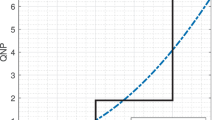Abstract
Inter symbol interference and related distortions observed in high data rate wireless systems are mitigated using equalizers and channel estimation methods which are traditionally based on data driven tapped delay line (TDL) models. With increased fading due to mobility of transmit receive terminals, data driven schemes prove to be inefficient. Further, the TDL model assumes the dispersive channel to be linear in nature unlike the practical case which is non-linear, resulting in degraded performance. In such a situation, extrapolation of the channel state information is required which has been done by using artificial neural networks (ANN) optimized for non-linear channels. We explore a few neuro-computational approaches namely focused time delay neural network, feed forward ANN (FANN)–decision feedback equalizer (DFE) (FANN–DFE) and a functional link neural network while modeling non-linear wireless channels. Further, implementation of FANN–DFE based algorithm has been carried out using a specialized hardware framework to show the reduction of computational latency during training to establish its suitability for real time applications.







Similar content being viewed by others
References
Baddour KE, Beaulieu NC (2005) Autoregressive modeling for fading channel simulation. IEEE Trans Wirel Commun 4(4):1650–1662
Baruah BB, Sarma KK (2012) ANN based equalization using coded inputs in Nakagami-m faded channel. Int J Smart Sens Ad Hoc Netw (IJSSAN) 1(3):83–86
Berezanskya L, Bravermanb E (2006) Mackey–Glass equation with variable coefficients. Comput Math Appl 51(1):1–16
Bhuyan M, Sarma KK (2013) DSP framework for FANN equalizer for application in stochastic wireless channels. In: Proceedings of IEEE international conference on connected vehicles and expo (ICCVE), Las Vegas, Nevada, USA
Bhuyan M, Sarma KK (2013) Nonlinear model based prediction of time varying SISO–MIMO channels using FANN–DFE combination. In: Proceedings of IEEE 1st international conference on emerging trends and applications in computer science, Shillong, India
Bhuyan M, Sarma KK (2012) MIMO–OFDM channel tracking using a dynamic ANN topology. J World Acad Sci Eng Technol 71:1321–1327
Hassim YMM, Ghazali R (2014) Training a functional link neural network using an artificial bee colony for solving a classification problems. In: Proceedings of the first international conference on advanced data and information engineering (DaEng-2013), vol. 285 LNEE, pp 69–78
Jacks WC, Cox DC (eds) (1994) Microwave mobile communications. Wiley, New York
Jatoth RK, Saladi MSBSV, Anoop SVKK (2009) An intelligent functional link artificial neural network for channel equalization. In: 8th WSEAS international conference on signal processing, robotics and automation, Cambridge, England, UK
Levin AU, Narendra KS (1995) Identification using feedforward networks. Neural Comput 7:349–357
Mehrpouyan H, Blostein SD (2008) ARMA synthesis of fading channels. IEEE Trans Wirel Commun 7(8):2846–2850
Nanda SK, Tripathy DP (2011) Application of functional link artificial neural network for prediction of machinery noise in opencast mines. Adv Fuzzy Syst 2011:1–11
Narendra KS, Parthasarathy K (1990) Identification and control of dynamical systems using neural networks. IEEE Trans Neural Netw 1:4–27
Patra GR, Maity S, Sardar S, Das S (2011) Nonlinear channel equalization for digital communications using DE-trained functional link artificial neural networks. Springer Contemp Comput Commun Comput Inf Sci 168:403–414
Patra JC, Pal RN (1995) A functional link artificial neural network for adaptive channel equalization. Elsevier Int J Signal Process 43:181–195
Potter C, Venayagamoorthy GK, Kosbar K (2010) rnn based mimo channel prediction. Elsevier J Signal Process 90(2):440–450
Rappaport TS (2004) Wireless communications: principles and practice, 2nd edn. New Delhi, Pearson Education
Sarma KK. Mitra A (2009) ANN based Rayleigh Multipath fading channel estimation of a MIMO–OFDM system. In: Proceedings of 1st IEEE Asian Himalayas international conference on internet AH-ICI 2009—the next generation of mobile, wireless and optical communications networks, Kathmandu, Nepal
Sarma KK, Mitra A (2011) Estimation of MIMO wireless channels using artificial neural networks. Cross-Discip Appl Artif Intell Pattern Recognit Adv Technol, IGI Global, USA, pp 509–545
Sarma KK, Mitra A (2012) Modeling MIMO channels using a class of complex recurrent neural network architectures. Elsavier AEUE Int J Electron Commun 66(4):322–331
Shin C, Robert W Jr, Powersand EJ (2007) Blind channel estimation for MIMO–OFDM systems. IEEE Trans Veh Technol 56:670–685
Stella M, Begusic D, Russo M (2006) Adaptive noise cancellation based on neural network. In: Proceedings of IEEE international conference on software in telecommunications and computer networks (SoftCOM (2006), Split, Croatia, pp 306–309
Turin W, Jana R, Martin C, Winters J (2001) Modeling wireless channel fading. 54th IEEE Veh Technol Conf (VTC) 3(4):1740–1744
Zhou W, Lam WH (2009) A fast LMMSE channel estimation method for OFDM systems. EURASIP J Wirel Commun Netw 2009:1–13
Acknowledgments
The authors acknowledge the support of Ministry of Communication and Information Technology, Govt. of India for facilitating the work.
Author information
Authors and Affiliations
Corresponding author
Rights and permissions
About this article
Cite this article
Bhuyan, M., Sarma, K.K. & Mastorakis, N. Neuro-computational frameworks for non-linear stochastic wireless channels. Evolving Systems 8, 109–120 (2017). https://doi.org/10.1007/s12530-015-9137-1
Received:
Accepted:
Published:
Issue Date:
DOI: https://doi.org/10.1007/s12530-015-9137-1




